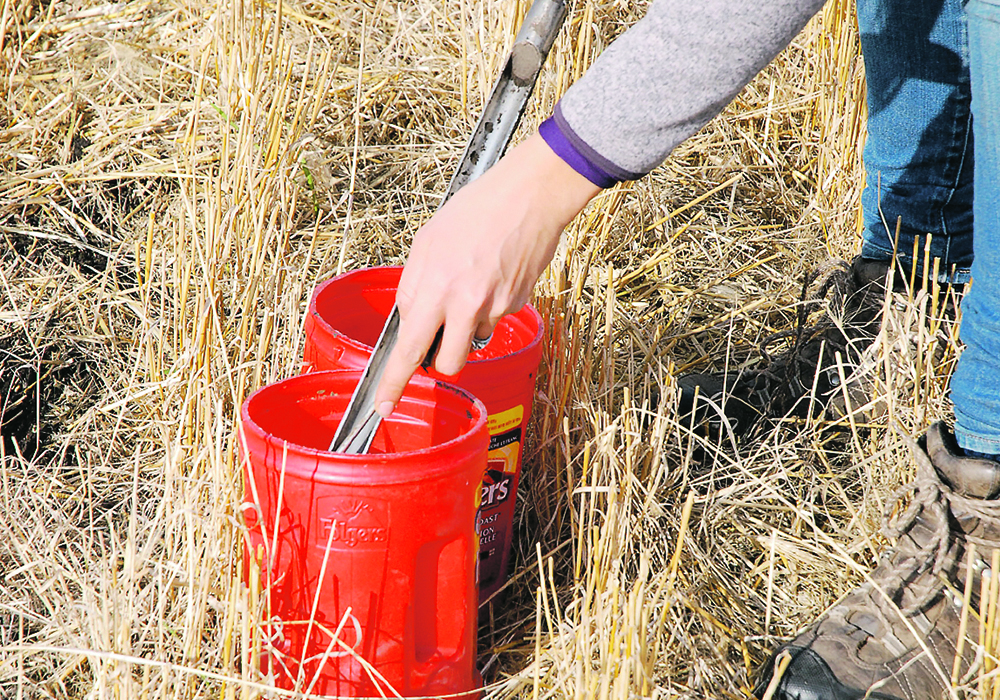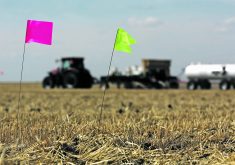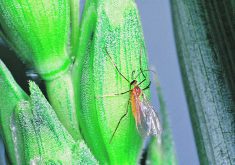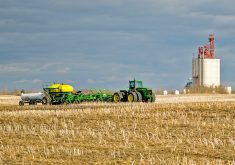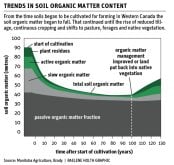Some people have been quoted as saying, “you can’t teach an old dog new tricks.” Well folks, I moved into the “old dog” classification a few years ago, but I’m trying to defy falling into the “can’t teach” part of this.
As a result, each year at this time I try to reflect on the previous year, and most importantly, see what I learned.
Well, 2022, in the words of Charles Dickens, was “ the best of times, it was the worst of times, it was the age of wisdom, it was the age of foolishness.”
Read Also

Agrifac launches ‘new generation’ of sprayers
Agrifac recently announced a “new generation” of self-propelled sprayers, consisting of three models: the Vanguard 55, Vanguard 67 and Endurance 80.
During the first soils class I took at university, probably in 1973, the professor came into the room and stated, “remember, most years in Saskatchewan, the most yield-limiting crop nutrient is H20.”
This past year, Western Canada was split generally into two dichotomies.
Run a line approximately down the second meridian, following close to Highway 2, and the region east of it saw increasing moisture and even excessive in some areas.
West of the second meridian saw drought conditions of varying intensity, although some areas, such as central Alberta and the Peace River region, received enough rain to produce acceptable yields.
My professor’s statement is as true today as it was 50 years ago. The real tragedy is that much of the Palliser Triangle has experienced three years of drought in a row. So, what we saw were areas where crop wasn’t harvested but turned into feed. I’ve talked to producers who have harvested single digit yields for two years now.
On the other hand, we saw areas of southern Manitoba and southeastern Saskatchewan where producers had difficulties seeding because of excessive moisture.
When thinking about drought and planting a crop following a drought, or at least a dry year, ensure that the soil sampling contractor you are using samples to 60 centimetres (24 inches). Last spring I reviewed a number of results, and there were up to 75 pounds of difference in available nitrogen when comparing 15 cm (six inch) and 20 cm (eight inch) samples.
Ideally, following a dry year, you want samples divided into zero to 15 cm and 15 to 60 cm depths. This is because unused nitrate will move downward with soil moisture if it occurs in the fall. Most of this will be available to next year’s crop.
Sampling at shallow depths will not identify this product and may result in nitrogen application rates higher than the crop can use. This is not good for the crop, for your bottom line or for the environment.
This year, east of Saskatchewan’s Highway 35, we saw excessive rain in May. Every weekend we saw six or more cm of rain or snow equivalent. Most growers didn’t get around to starting their seeding until the time they hope to be finished.
I’ve long been a proponent of early seeding. I’ve reviewed scientific data and meta data from provincial crop insurance organizations, and they all seem to confirm that late planting costs you 1.5 to two percent of yield per day that is delayed from the optimum date in your area.
I have tracked this using Environment Canada data, and in Saskatchewan, that date is around May 7 to May 10.
I have also correlated this to the leafing out of native poplars — trembling aspens to be more correct. This past year I observed poplars leafing out around May 15. Most of the crop was seeded at least a week later. I was expecting to see a yield hit of 10 to 25 percent come fall.
Well, someone upstairs must have been watching over us because the yields were among the best ever seen. As a result, I have to rethink my planting date losses or write it off to stupid luck, which can occur when we deal with Mother Nature. Just when you think you have it figured out, she steps in and sets you straight.
Flea beetles are getting worse. It seems every year the populations are getting bigger and hungrier.
I used to believe warm, dry weather favoured their emergence and activity. Warm temperatures increase flea beetle metabolism, which likely means more feeding per beetle. The same dry weather slows crop growth, leaving plants at a vulnerable small size for longer.
However, at least in eastern Saskatchewan and Manitoba, we were not dry. We have seen an increase in striped flea beetles and they definitely are more aggressive feeders. There was a huge flush of volunteers from 2020 and 2021, so when these were sprayed out, did they ever attack the planted canola. Over the last three to four years, foliar applications of an insecticide have almost become a necessity.
Near-record commodity prices continue to be offered at elevators, putting smiles on producers’ faces, the smiles turn to frowns on cattle operations. This, along with record high fertilizer prices, has brought the marketers of soil and fertilizer enhancement products out of the woodwork.
Many of these product performance claims are suspect. My advice to you is — and I quote my friend and former colleague, Rigas Karamanos: “In God we trust; everyone else, bring your data.”
When you encounter a new “wonder product,” ask for their trial data from research done by a reputable research organization. A number of these organizations provide excellent data, and if these companies really believe their product is the best thing since sliced bread, they should have trust that their product will perform and have data to market it.
Don’t fall into the trap of believing testimonials and promises. Over the years I’ve seen scores of these products come, stay for a few years and disappear as users realize that they are not delivering the expected results. And the only ones getting rich are the ones selling them.
Which brings me to my next subject: biologicals.
A number of these products are showing up in the market. Do biologicals work? Well simply speaking, yes. We only have to look to rhizobacteria and nitrogen fixation in legumes to see they work and can produce incredible benefits to crops.
The big issue is moving beyond these products and into other crops and aspects of soil and crop nutrient needs. From penicillium bilaiae (JumpStart) to arbuscular mycorrhizal (AM) fungi and beyond numerous biological entities have been registered or are in development by countless organizations — big and small — that have activities to enhance plant growth.
The problem is that biologicals are heavily influenced by the environment in whch they are used. While there are wide differences in environments in Western Canada, from Altona, Man., to High Level, Alta., the differences in soil environments magnify the differences by orders of magnitude. Generally, it has been difficult to reproduce the performance of many of these organisms across wide varieties of soils and locations.
The Canadian Food Inspection Agency is the lead agency responsible for regulating fertilizer supplements, including novel supplements (microbial and chemical). They are regulated by products under, among others, the Health of Animals Act, the Plant Protection Act, the Seeds Act, the Fertilizers Act and the Feeds Act. To quote Rigas again: “In God we trust; everyone else, bring your data.”
We’ve lost some significant insecticides in 2022.
Chlorpyrifos, the active ingredient in Lorsban 480, has been withdrawn from the market and, while it can be still used in 2023, product will no longer be sold in Canada. While used on many crops for a wide variety of insects, perhaps the biggest loss will be felt by growers looking to control wheat midge, where it was the most effective control product available.
The other product that has seen significant changes, and at the time of writing is still seeing uncertainty, is lambda-cyhalothrin, sold as Matador or Silencer. Restrictions put on the labels include the removal of application for all feed use.
This will significantly complicate the use of this product for grasshopper or cutworm control early in the season where the end use, because of drought or hail, may change in six weeks or a month. The following are precautions on the current Silencer label:
Do not cut treated fields for hay or forage.
Do not graze treated fields.
Do not feed treated crops to livestock.
Use for grasses/non-grasses grown only for seed production.
Do not feed seed screenings to livestock.
Here’s a challenge for all farmers this year. Keep a list of what you learned in 2023 or what things you relearned. Jot them down and keep them for future reference. And, if you want to send them to me, please do and I’ll add them to my list. I’m always open to proving that this old dog can learn new tricks.


